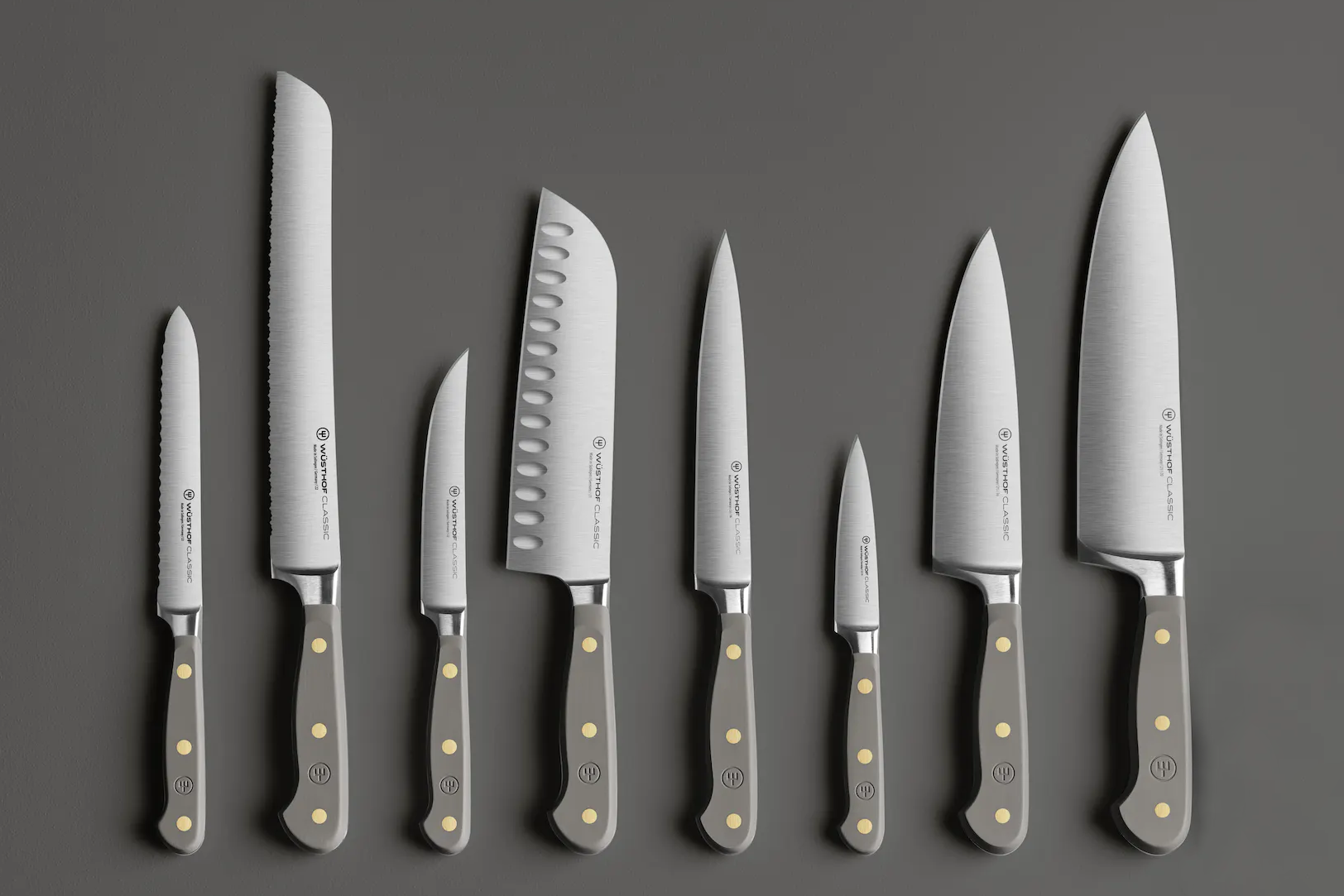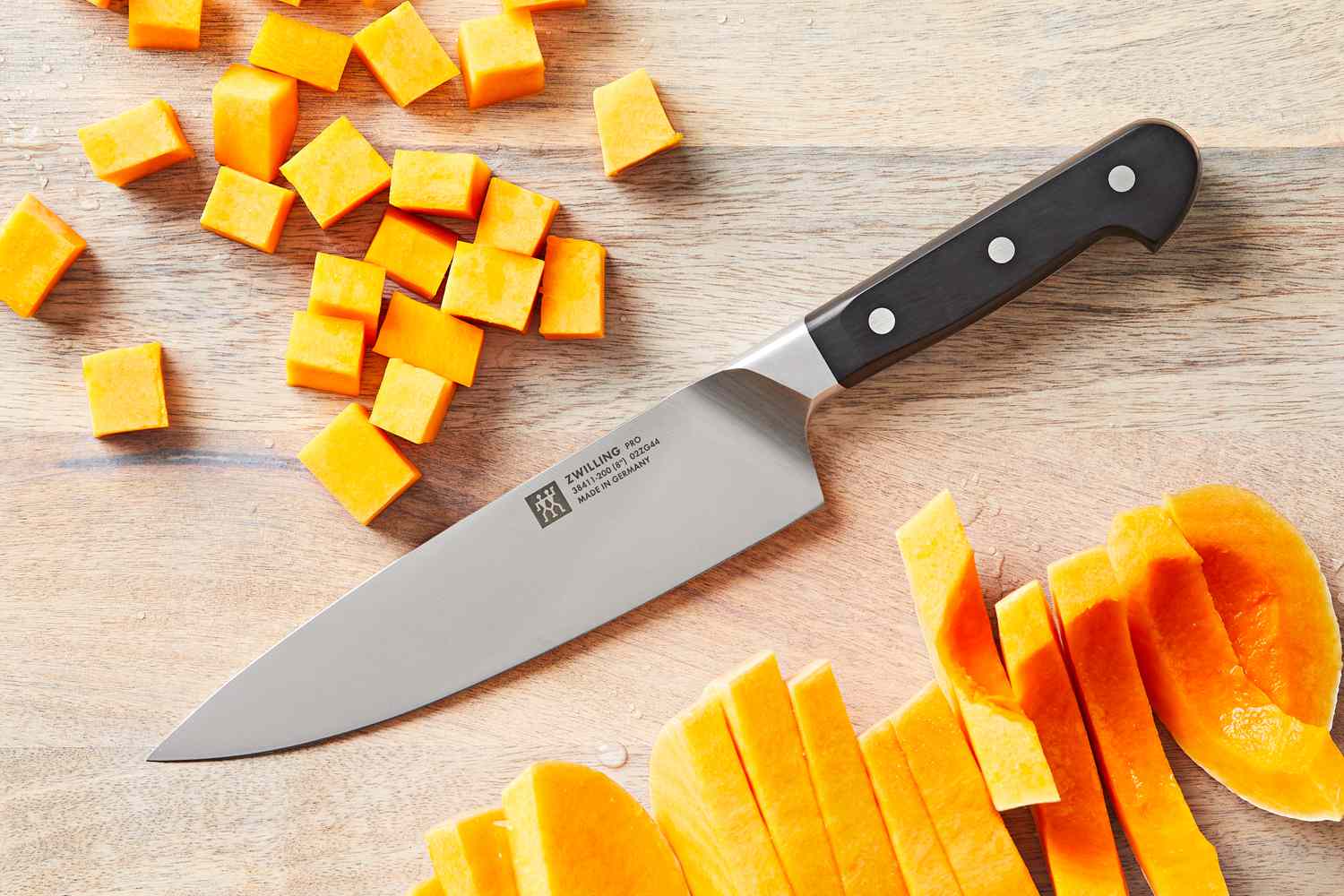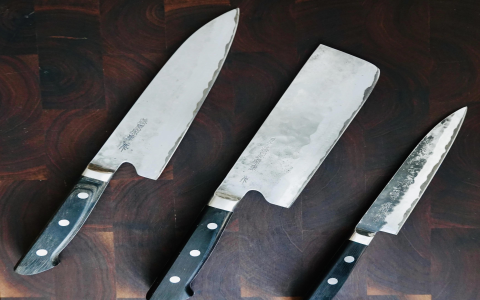Alright, so I wanted to talk a bit about kitchen knives, specifically the steel they’re made from. It’s a rabbit hole, let me tell you, but I think I’ve got a decent handle on it now, at least for what matters to me in my kitchen.
It all started a while back. My old knives were, well, terrible. You know the type – came in a block, looked okay, but trying to slice a tomato was more like wrestling it into submission. Forget about dicing an onion without tears, not from the onion, but from sheer frustration. So, I decided, enough is enough, I’m going to get a good knife.

That’s when the confusion hit. I started looking around, reading stuff online, and suddenly it wasn’t just about sharp or not sharp. It was all about “types of steel.” Carbon steel, stainless steel, high-carbon stainless steel, then all these weird codes like VG-10, AUS-8, SG2… My eyes glazed over pretty quick. I just wanted a knife that cut things, you know?
My First Misconception: Stainless is Stainless, Right?
I figured stainless steel was just… stainless steel. Like the stuff in my sink. Easy to clean, doesn’t rust. Most of my old, dull knives were stainless. They didn’t rust, true, but they also didn’t hold an edge for more than five minutes. I’d sharpen them, and a few meals later, back to squashing tomatoes. So, I learned that not all stainless steels are created equal. Some are softer, which makes them tougher and less likely to chip, but also means they lose their edge faster. These are often the cheaper ones, the kind you find in those big block sets.
Then I Heard About Carbon Steel
Then I started hearing folks, especially serious cooks and chefs, raving about carbon steel. They’d go on about how incredibly sharp these knives get and how well they hold that edge. Sounded great! But then came the catch. Carbon steel, I found out, is reactive. Big time. You cut an onion, you gotta wipe that blade clean and dry it immediately. If you leave it wet, or with acidic stuff on it, rust spots can appear, like, super fast. It also develops this thing called a “patina” over time, a sort of discoloration. Some people love the look, says it tells a story. Me? I wasn’t sure I was ready for that kind of commitment. I can be a bit forgetful, and the thought of ruining a pricey knife because I got distracted… not ideal.
- Pros I noted: Gets crazy sharp, holds edge well.
- Cons I noted: Rusts easily, needs constant care, gets a patina (which could be a pro for some, I guess).
The “Best of Both Worlds?” High-Carbon Stainless Steel
Just when I was about to either give up or resign myself to a high-maintenance carbon steel blade, I stumbled upon what many call high-carbon stainless steel. This sounded promising. The idea, as I understood it, was to take stainless steel and add more carbon to it. The extra carbon helps it get sharper and hold an edge much better than basic stainless, but you still get a lot of that rust resistance. Not quite as rust-proof as the cheap stainless, so you still can’t just leave it soaking in the sink (which you shouldn’t do with any good knife, really), but way more forgiving than carbon steel.
This seemed like the sweet spot for someone like me. I want a knife that performs well, stays sharp for a decent amount of time, but doesn’t require me to treat it like a newborn baby after every single use. I found out a lot of popular German knives and many Japanese knives use these types of steels. They might have different names and fancy numbers, but the general idea is that balance between sharpness, edge retention, and rust resistance.
So, What Did I End Up Doing?
Well, after all that digging, I realized there’s no single “best” steel. It really depends on you and how you cook and care for your tools.
I started paying more attention to what the knives I was interested in were actually made of, not just the brand name or how they looked.

I learned that for my main workhorse knife, something in that high-carbon stainless steel category was probably the way to go. I wanted something that could handle daily chopping without me panicking about rust every five seconds.
For a special task, maybe I’d consider a carbon steel knife one day, just to experience that legendary sharpness, but for everyday, easy-care performance won out.
It took a bit of effort to get my head around it, but understanding the basic differences between these steel types really helped me feel more confident when I finally picked out a new chef’s knife. And let me tell you, going from my old tomato-squashers to a properly sharp knife made with decent steel? Night and day. Chopping is actually enjoyable now. Who knew?












